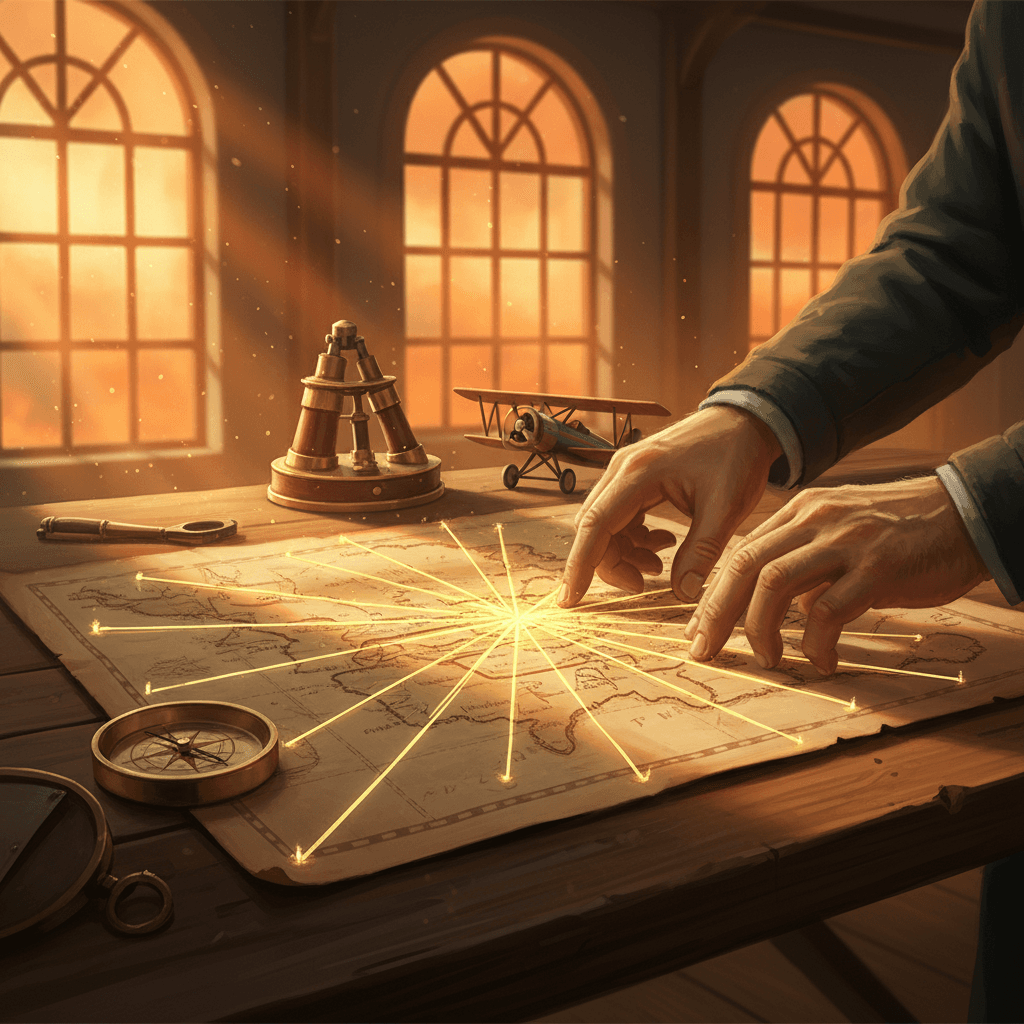Chart the Unknown With Your Own Hands

Create a map with your hands rather than waiting for one to appear. — Amelia Earhart
Earhart’s Call to Act, Not Await
At the outset, Earhart’s exhortation rejects passivity: progress is a craft practice, not a gift delivered. Her life embodied it. In 1932, she became the first woman to fly solo across the Atlantic, threading volatile weather and uncertain fuel calculations into a workable route. She did not wait for ideal charts so much as refine them in motion, turning experience into guidance. Her essays in The Fun of It (1932) emphasize preparedness yoked to decisive action—a belief that courage is most reliable when it is engineered through checklists, contingency plans, and disciplined improvisation. In short, the map she trusted most was the one she continually made with her own hands, line by line, as conditions changed.
Maps as Mental Models Built by Movement
From there, the quote opens into cognitive territory: maps are not only paper artifacts but living mental models updated through feedback. Edward Tolman’s classic paper, Cognitive Maps in Rats and Men (1948), showed that organisms form internal layouts of their surroundings by exploring, not by waiting for perfect instructions. Similarly, our understanding of new careers, teams, or cities matures through small forays that reduce uncertainty. Each tentative step—an informational interview, a prototype, a pilot trip—adds contour and distance to an initially blank terrain. Thus, action does not merely follow knowledge; it manufactures the knowledge, translating vague intentions into navigable landmarks and turning unknowns into testable hypotheses.
Wayfinders and the Tactile Craft of Navigation
Likewise, history offers hands-on metaphors that are literal. Pacific wayfinders measured star height with finger widths and knuckles while reading swell patterns to steer across open ocean; the Hōkūleʻa voyages (1976–present) revived these techniques, as Nainoa Thompson learned from master navigator Mau Piailug. On land, the Lewis and Clark Expedition (1804–06) mapped rivers and passes by observing, sketching, and correcting in the field. Early aviators, too, marked wind drift with grease pencils on plexiglass and adjusted headings by dead reckoning long before radio beacons were reliable. In each case, navigation was not passive consumption of a finished chart; it was a tactile dialogue with reality, where the hands taught the mind which lines truly belonged.
Design Thinking’s Productive Bias Toward Action
Moreover, modern innovation formalizes Earhart’s stance. The Stanford d.school popularizes a bias toward action: build to think, then iterate based on what you learn. Eric Ries crystallizes this in The Lean Startup (2011) with the build–measure–learn loop, which treats early prototypes as instruments for discovering the terrain. Instead of waiting for certainty, teams create a minimum viable map—a sketchy but testable model—then refine it with real user data. This approach honors humility (we do not know) and responsibility (we will find out). By shrinking experiments, we shrink risks, but we also expand the fidelity of our map, revealing cliffs, shortcuts, and vistas that planning alone could never expose.
Steering Uncertainty with Agency and Foresight
Meanwhile, uncertainty remains a constant headwind. The Stoic Epictetus framed resilience as a focus on what we can control—our judgments and actions—rather than on external outcomes (Enchiridion). Earhart’s maxim aligns with that discipline: hands act where control is possible. To sharpen judgment before acting, Gary Klein’s premortem technique (Harvard Business Review, 2007) invites teams to imagine that a project has failed and then list reasons why. This preemptive critique turns vague anxieties into concrete watchpoints, effectively annotating the blank map with hazards. Thus, agency and foresight become companions: we move, but we also mark the route with caution signs we have reasoned into existence.
A Practical Toolkit for Making Your Map
Consequently, the craft becomes a set of repeatable habits. Start with a 48-hour micro-pilot that confronts a single uncertainty; treat results as cartographic data, not verdicts. Keep a field log: record assumptions before acting, observations during, and surprises after—then rewrite the map. Use decision checklists to reduce error under pressure (Atul Gawande, The Checklist Manifesto, 2009). When stakes are high, run two divergent small tests rather than one big bet; parallel paths expose the contours faster. Finally, schedule formal map updates—weekly reviews that convert lessons into routes, rules of thumb, and stop conditions. In practice, the work looks humble: sketches, notes, and modest trials that, over time, assemble into guidance robust enough to trust.
Bringing the Ethos to Everyday Life
Ultimately, Earhart’s line is not only for pilots. A job seeker who prototypes roles via short projects, a community organizer who canvasses and charts lived needs, or an artist who iterates mediums before committing—all are hand-making maps. They treat confusion as an invitation to explore and feedback as the compass. By acting before certainty arrives, they transform unknowns into knowledge and fear into forward motion. In doing so, they honor the oldest navigator’s truth: the path reveals itself to the feet—and the hands—that move.